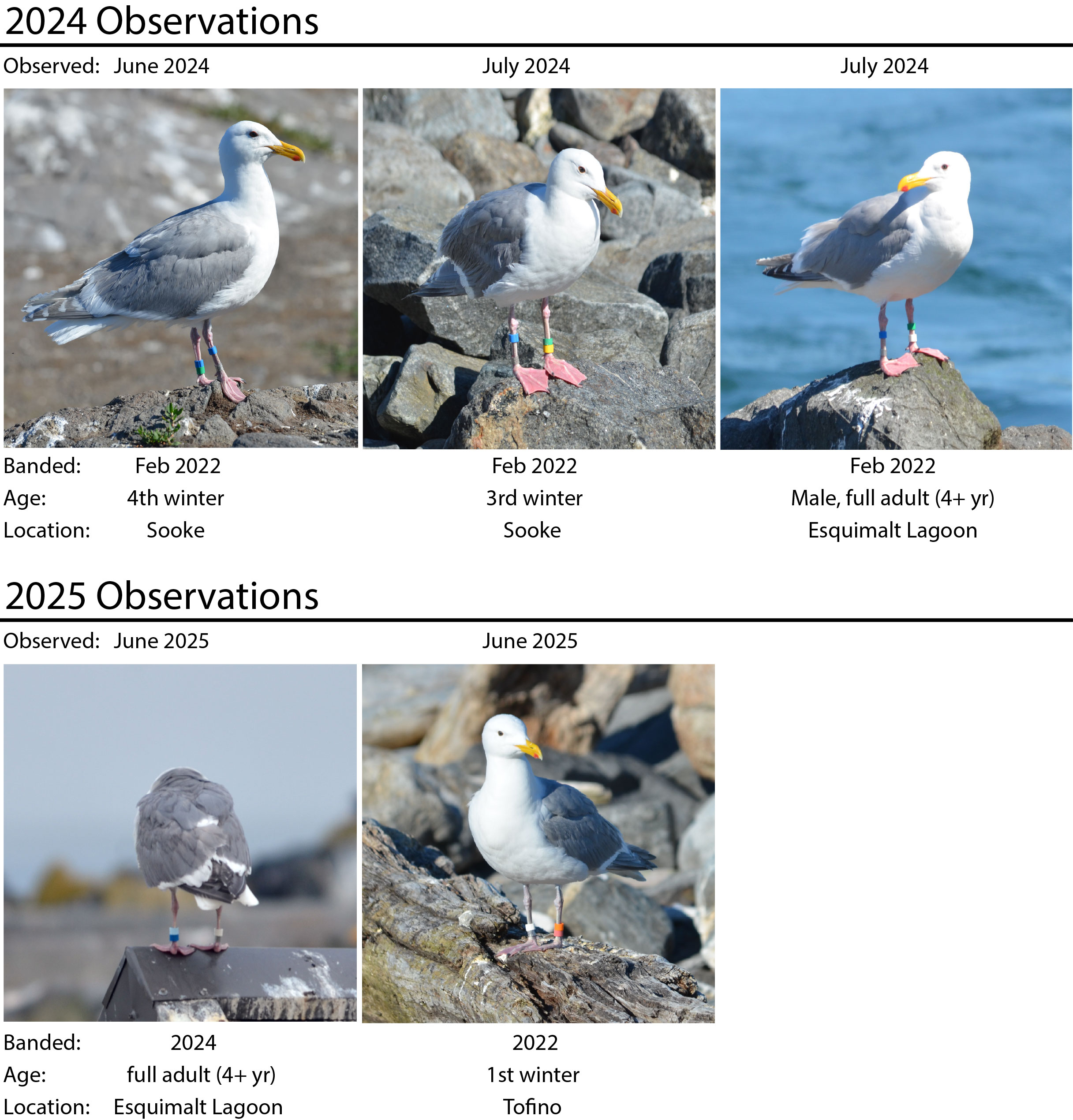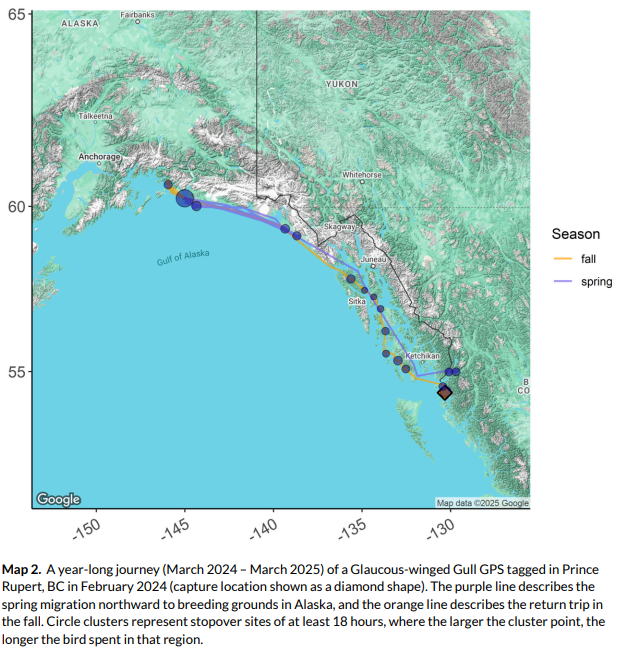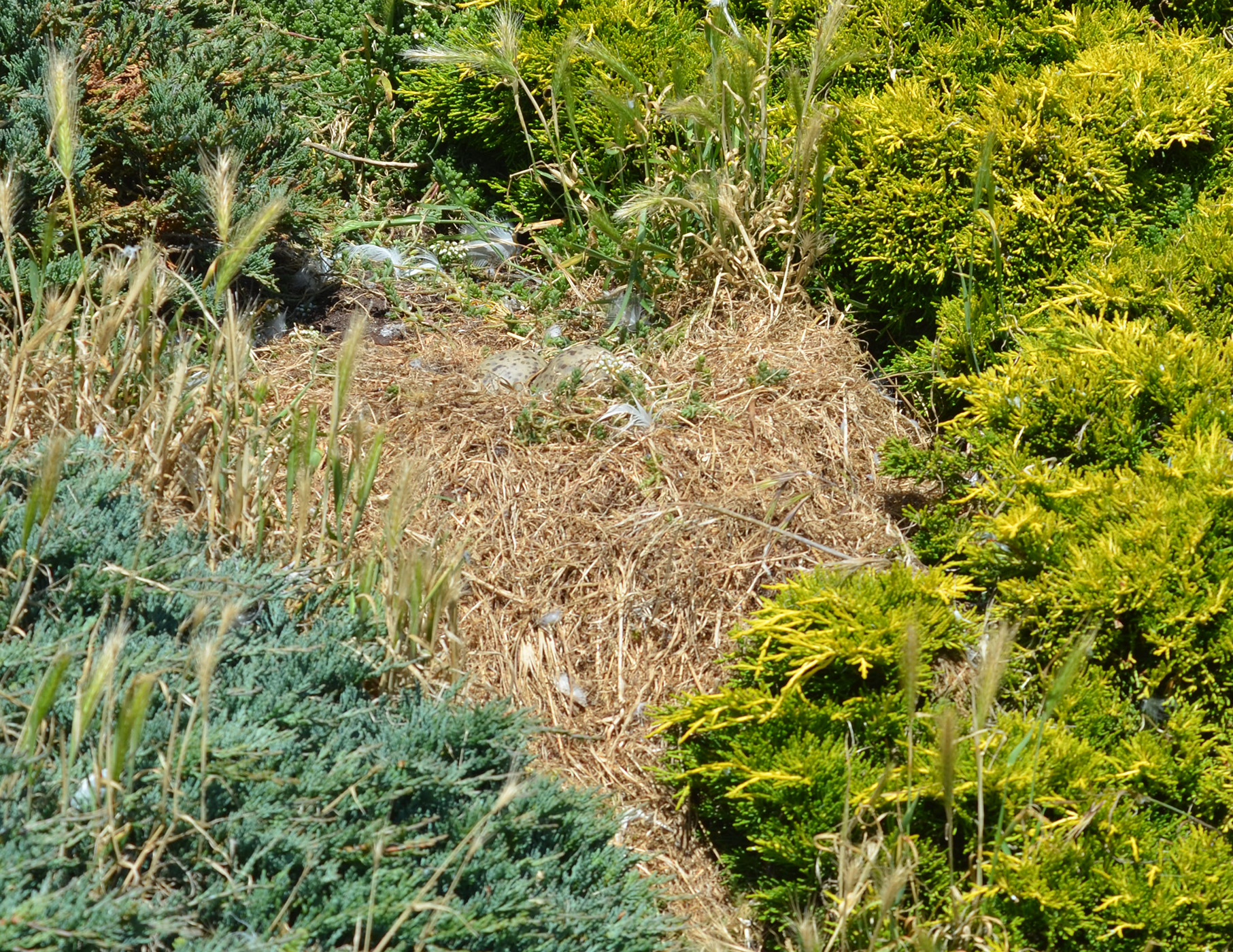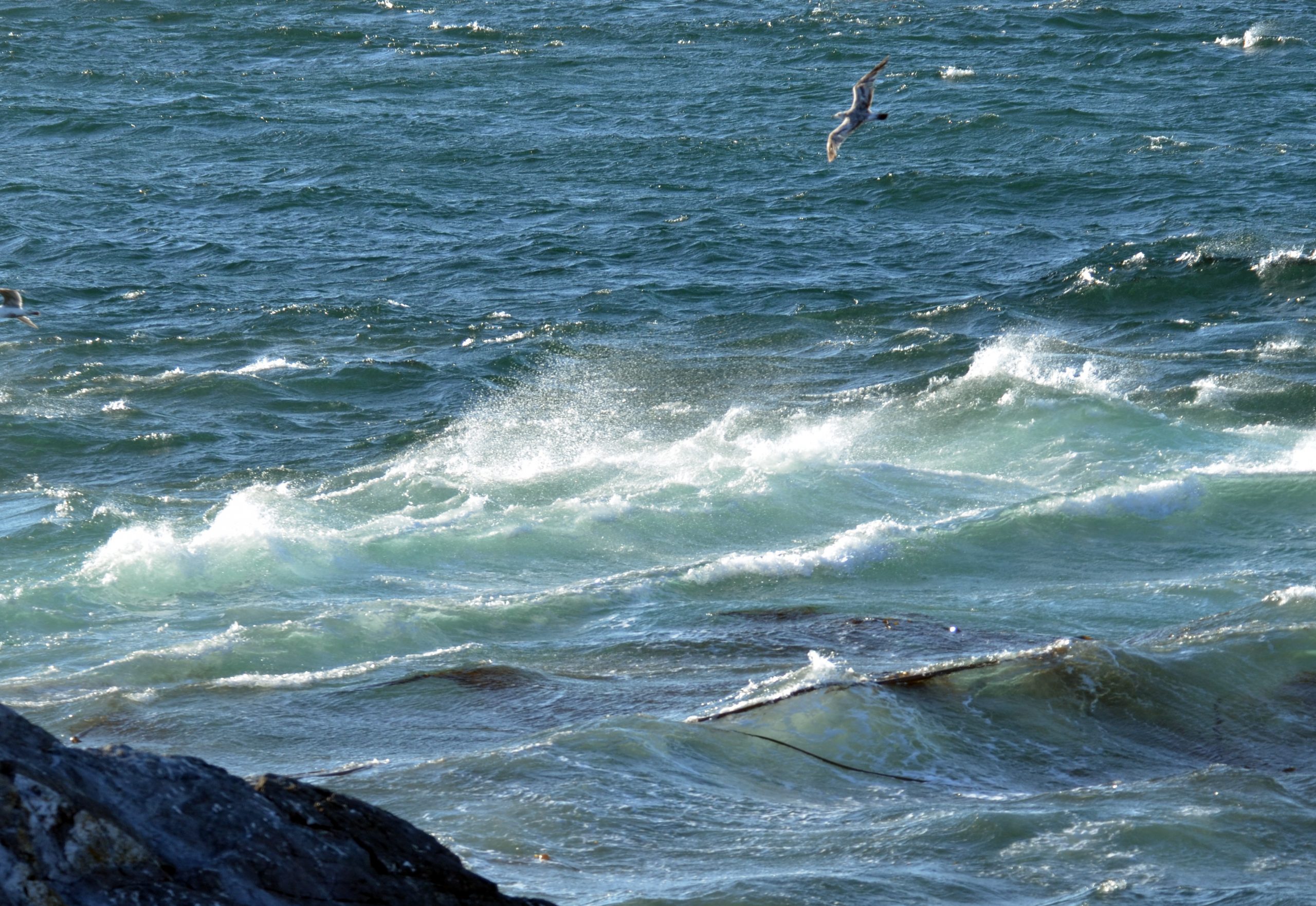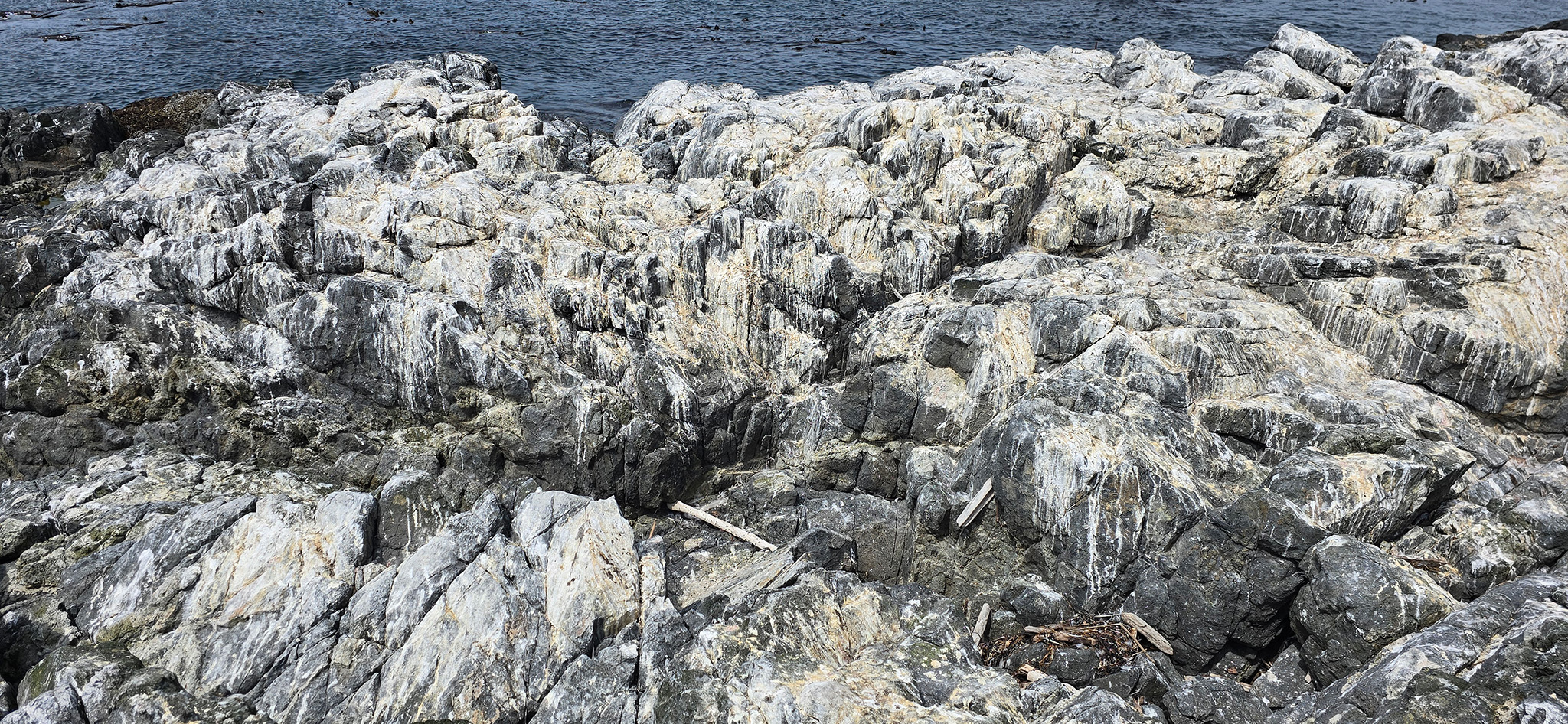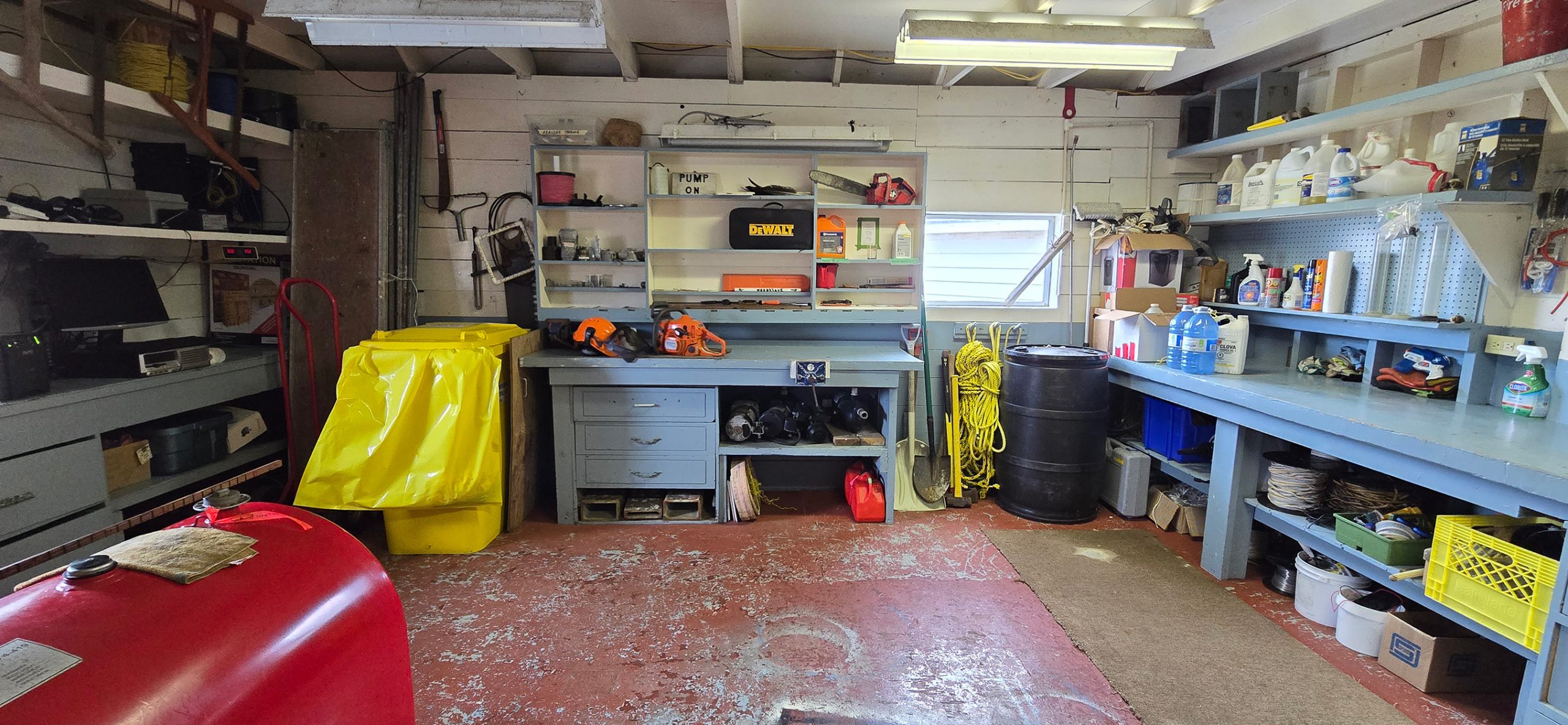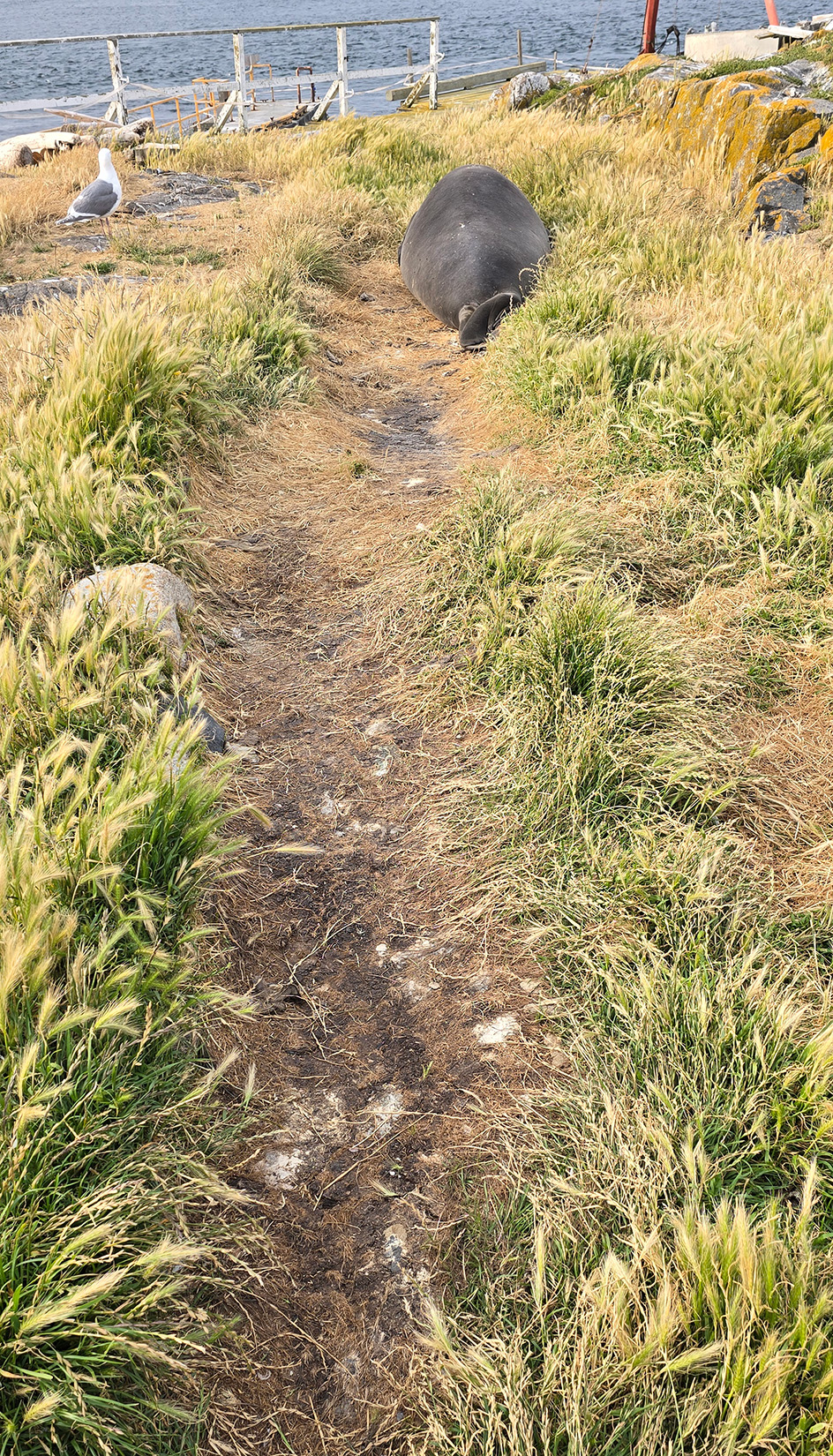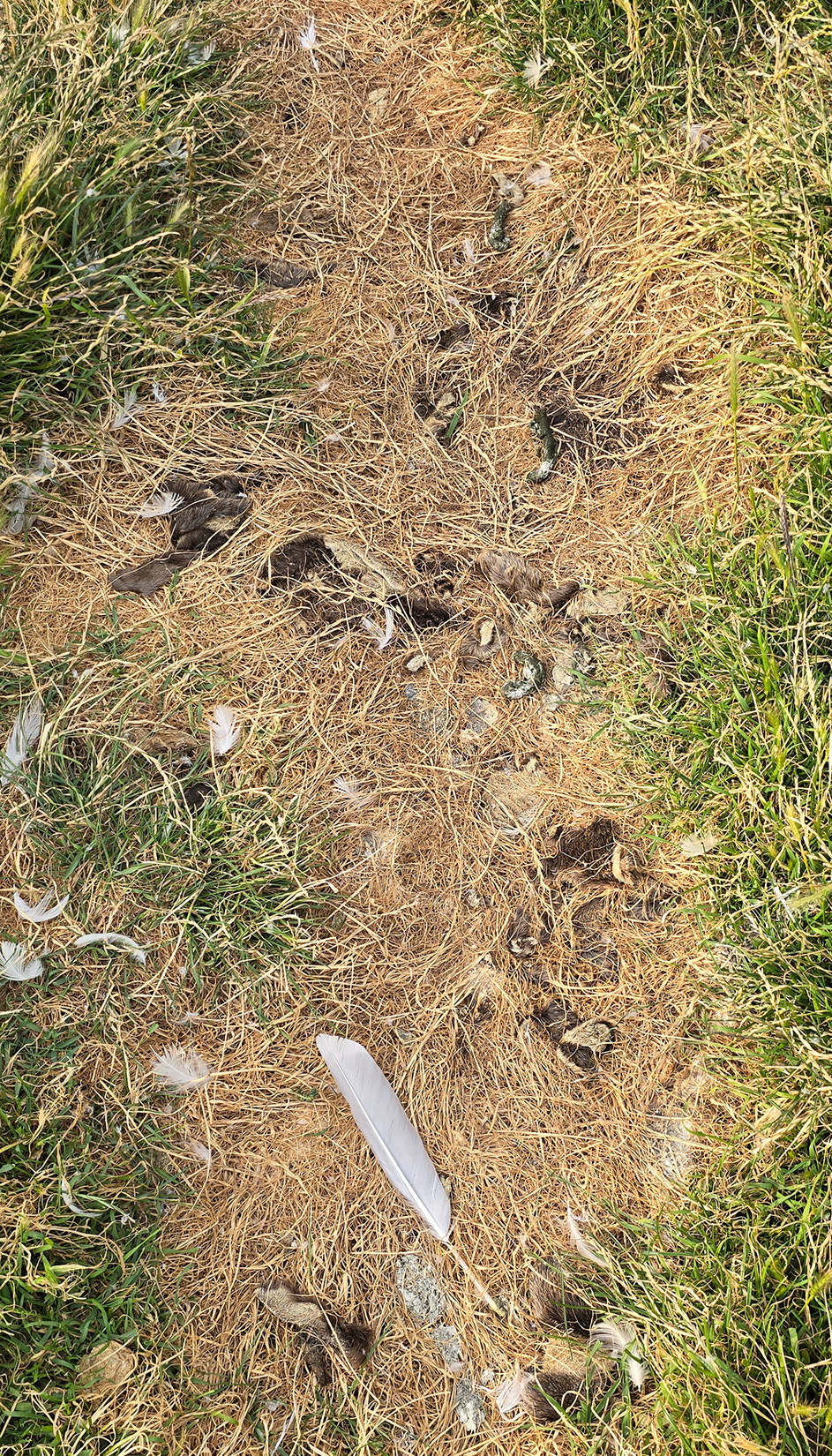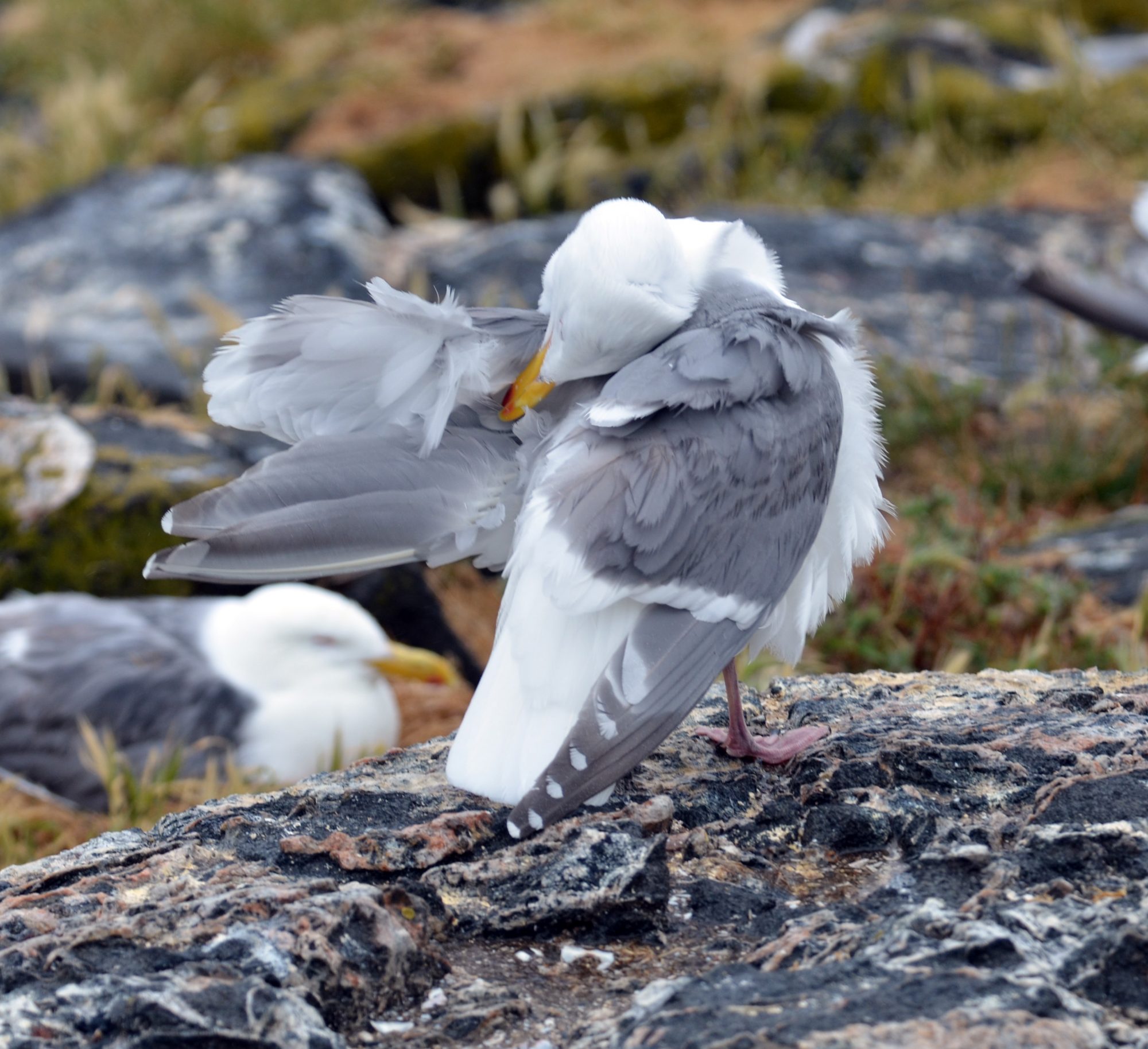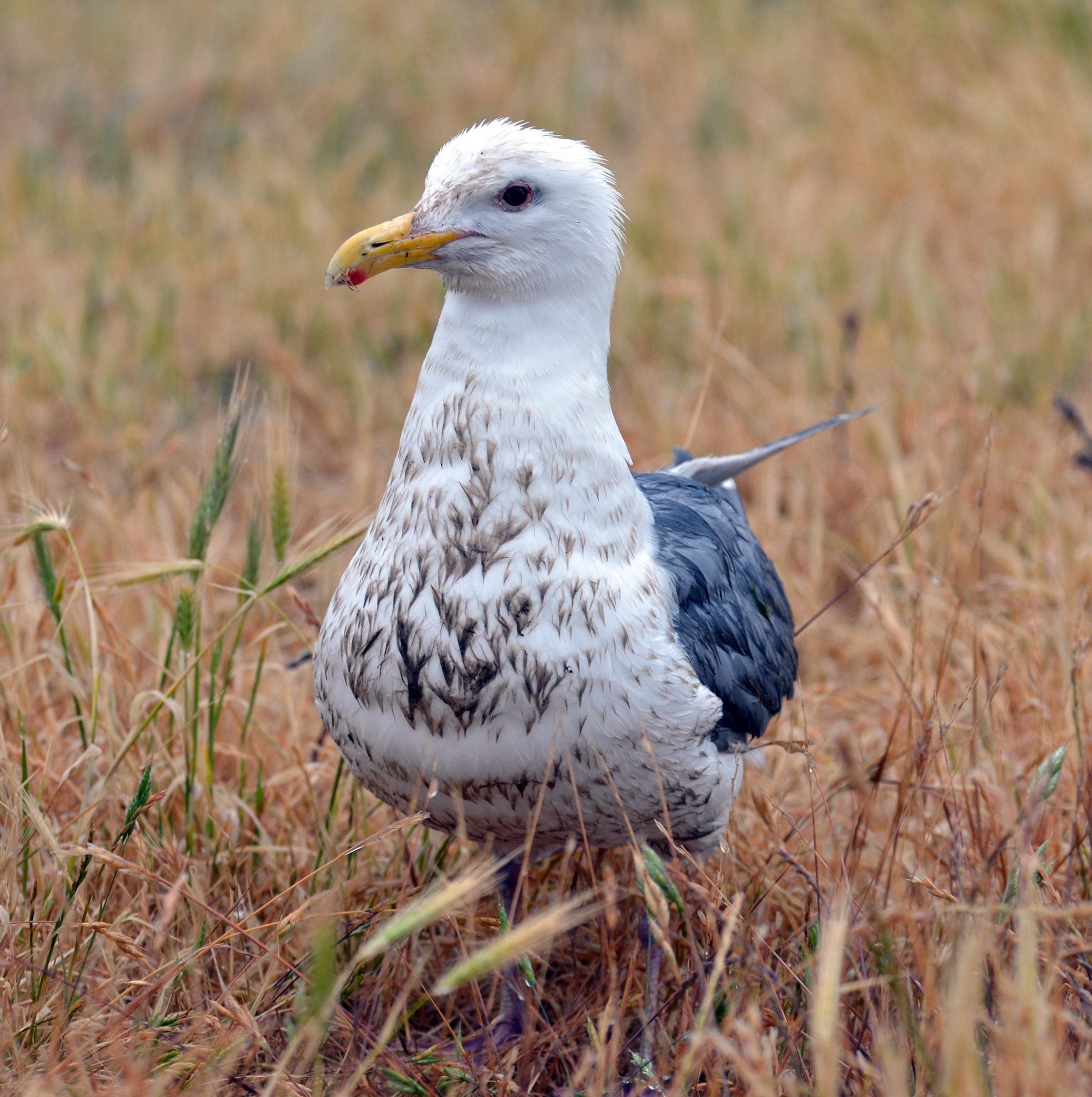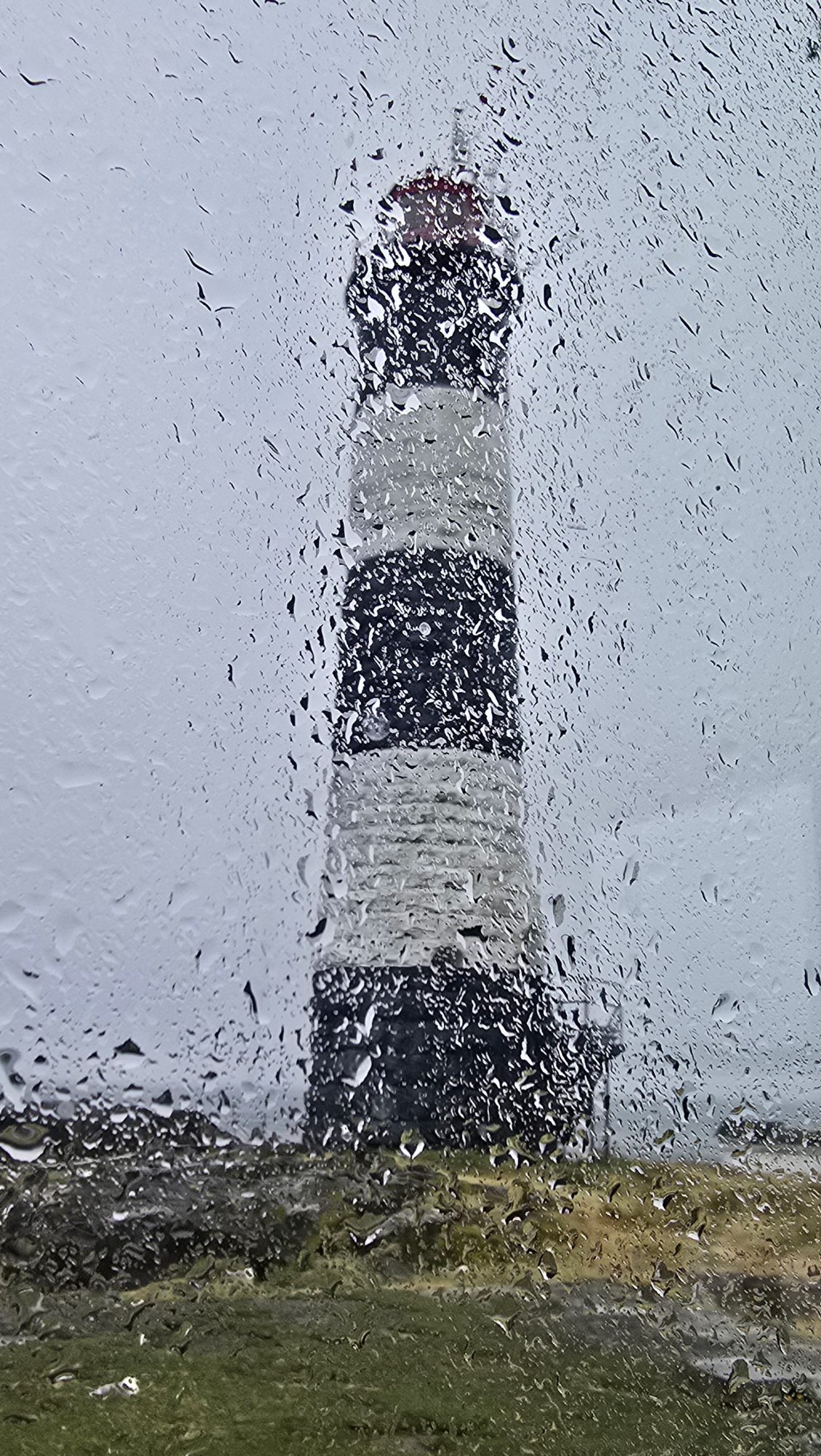The glaucous-winged gulls that breed and nest on Race Rocks are present year-round in the Salish Sea. They are being studied as indicators of ecosystem health by Environment and Climate Change Canada’s Salish Sea Marine Bird Monitoring and Conservation Program. Individual birds are identified by their colour bands. This allows researchers to track their movements over time, their location preferences (site fidelity) and survival. They also collect blood and feathers samples for genetic, physiological, pathogen, parasite and contaminant analyses. Some of the birds get GPS tags so their precise movements can be followed. The project has been running since 2020. The researchers visited over 300 sites and banded over 800 gulls.
I sighted and reported three of the banded birds in June and July 2024 and two so far on June 28 and 29, 2025. The project lead Dr. Mark Hipfner says the last gull reported who was banded in Tofino is of particular interest as it was banded in its first winter of life “…so this is its first year in full adult plumage. These ones are ESPECIALLY valuable because we ultimately want to derive an estimate of age-specific survival and we also want to monitor changes in plumage with age.”
Like the gulls I reported, the majority of glaucous-winged gulls stay close to home. In their 2025 report in Map 2 (see below), they provide the travel details for one adventurous gull who went from Prince Rupert to Alaska to breed and then back again over the course of one year. That inspirational bird spent a lot time in the Copper River Delta and in the area of Kayak Island. I am envious as those are two place I would LOVE to see.
They have one more year to go in the study but will the continue the banding program after that. Soon they will be able to report on gull habitat use, diet (via stable isotope analysis they can tell if the gulls feed in marine versus inland areas), physiological health, age, disease and contaminant levels. From the genomics data they will be able to determine provenance (the location they came from), population structure, and the extent of hybridization.
To learn more about this project and the banded glaucous-winged, California and short-billed (Mew) gulls, see their 2025, 2023 and 2022 reports.
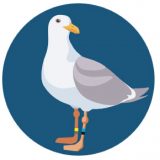
How to report a banded gull? Illustration from the ECCC poster
As of this spring, they had over a 1000 reports of banded gulls from the public. To contribute to this project and report a banded gull, take a photo showing the bands, record date and location and send to:
- online form
- or to report with your phone, see their poster
Wildlife notes:
A gull nest with two eggs has been abandoned. “Perfect Perch” (last photographed on her nest on May 29) has not been on the nest for the last three days. This is something I did not observe last summer. Strangely the eggs are still in the nest and have not been taken.
Facility work:
- cleaned the solar panels
- worked on Jetty electric fence replacing the gate parts by the steps and the stainless tie bands.
Vessels:
- Ecotourism: 1
- Private: 2
Weather:
- Clear skies. Moderate westerlies building to gale force by early evening! The house is quacking and shaking. Daytime temperatures: low 11, high 15. Some part of Vancouver Island are close to 30 degrees and I have a fire going to warm up the house.
I did not collected the sea water temperature and salinity data tonight at 19:00 as the wind was 35 knots.
